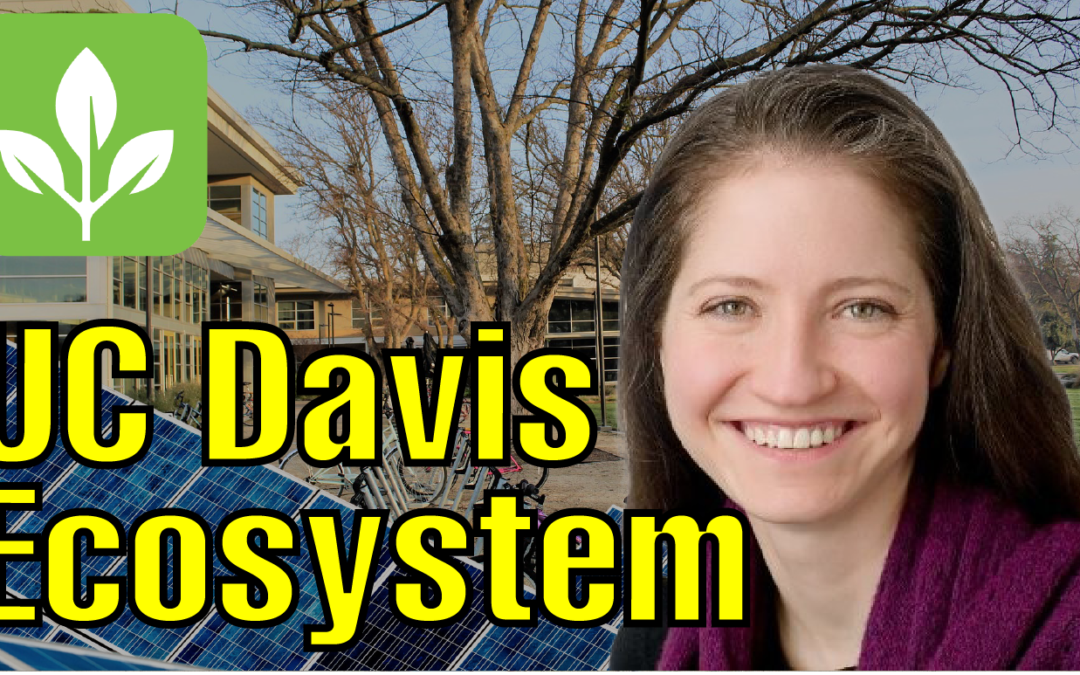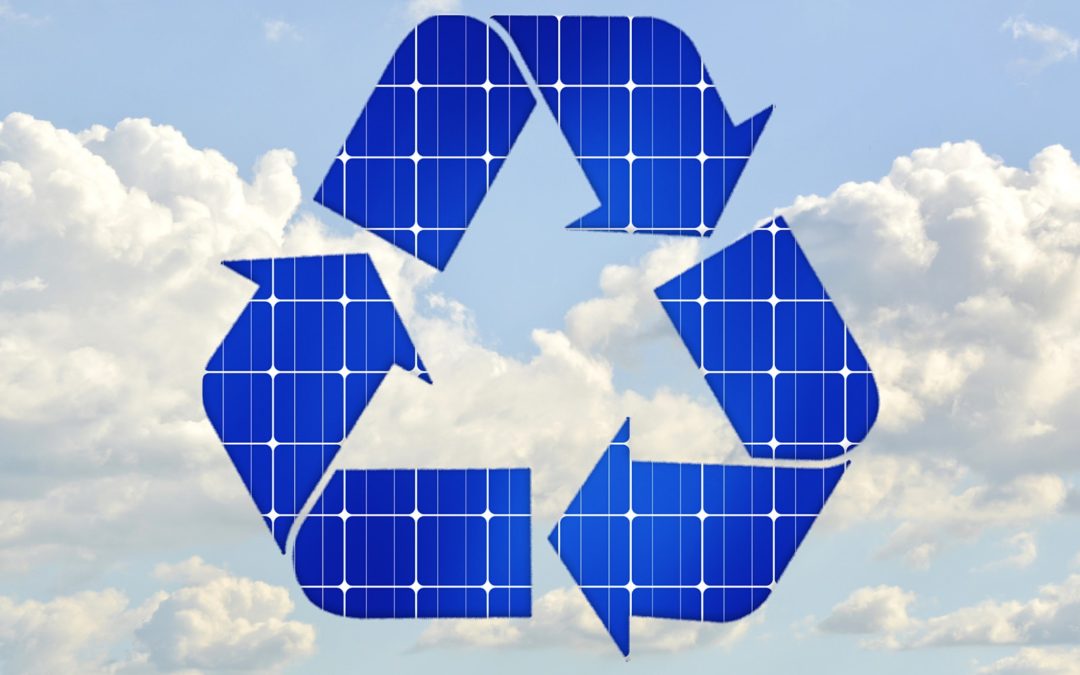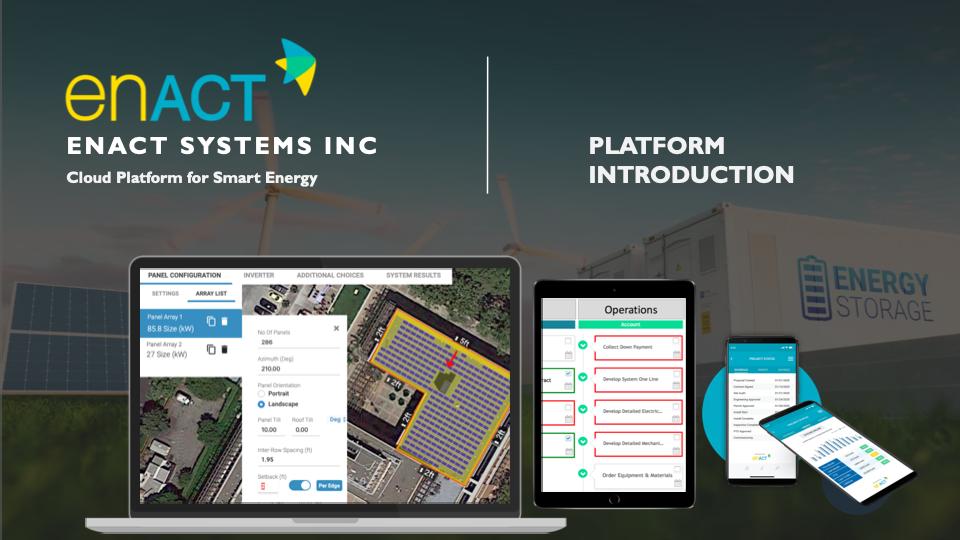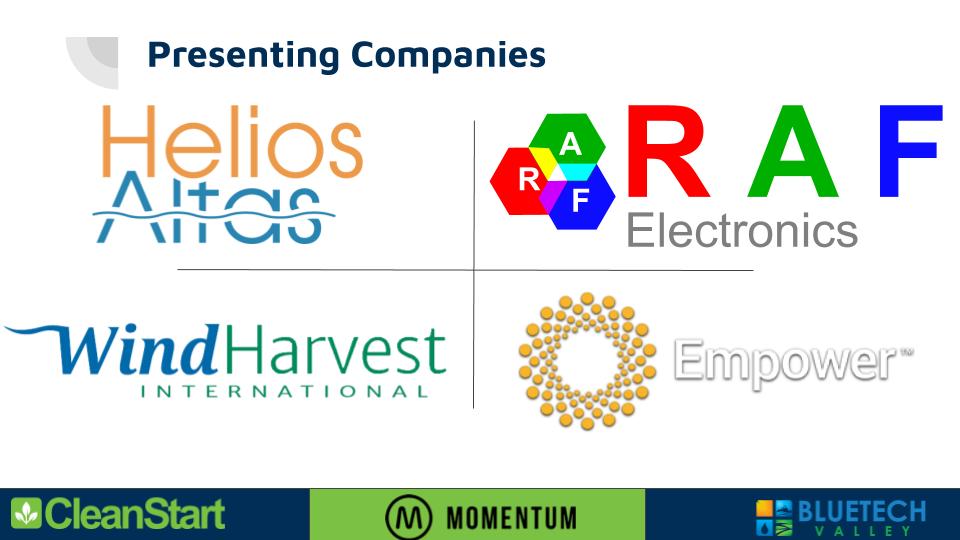
Emrgy
Follow us!

Follow us!

Based on the idea that the Sacramento region is “primed for success” in launching new businesses, but that entrepreneurs needed help in getting started, Mark Haney and Monique Brown founded a new business accelerator based in Rocklin—the Growth Factory. On March 10, Monique told a big crowd online at our Perspectives event what she is doing and how that might help cleantech entrepreneurs.
There were two parts to her story. First the Growth Factory puts on a serious 12-month long training and coaching program intended to take pre-seed companies from “Minimum Viable Product (MVP) to fundable traction” in a structured program. Their first cohort in October 2021 included 15 companies that first got 4 months of coaching and then began 16 weeks of classes. These 15 got over $500,000 in investment to propel them forward. Seventy-five companies applied, validating the notion that there are plenty of entrepreneurs here with good ideas that can become viable businesses with a little help. Applications for the next cohort are open now, with space available for 8-10 companies. The deadline to apply is April 15. The focus is on high-growth, tech-related, scalable companies and cleantech companies are welcomed. If you aren’t ready for this cycle, applications for Cohort 3 will open in September. If you are not accepted, apply again in a future round. Monique says there will be two application periods each year.
The second part of her story, and a big one, is the creation of a venture fund alongside the training program to invest in the most promising companies that complete the accelerator program. Growth Factory Ventures has raised $10 million from 99 accredited investors as limited partners. This is a huge step in the region because it is the kind of money that is hardest for entrepreneurs to get and it has come from a pool of small investors that had not previously been tapped. The idea is to use the fund to put $25-50K each into accelerator companies, giving them that crucial first funding that can get them to having a viable product and a solid business plan. Monique and her partner Rick Spencer in this venture fund have been careful to set realistic expectations for investors. They have been saying that this will be a long journey for these fledgling companies and it could be 7-10 years before returns are realized. Even with this note of caution, investor enthusiasm has been good. Founders of existing small companies have stepped up to participate and fund investors have been willing to make direct investments outside of the fund to companies in which they have a particular interest.
These initiatives go a long way to filling some gaps in our local startup ecosystem, creating the most intense training and coaching programs to date and coupling that program to a source of early-stage investment that brings in money from an untapped source. Previously, these kinds of opportunities were only available outside the region and resulted in young companies moving away to take advantage of them. Thanks to the Growth Factory, the region can more easily retain these rising stars and create a “virtual circle” that can stimulate the success of even more.
You can learn more about the Growth Factory and access an application to join the next cohort here. Monique’s complete talk is available on below.

ABOUT THE AUTHOR
Gary Simon is the Chair of CleanStart’s Board. A seasoned energy executive and entrepreneur with 45 years of experience in business, government, and non-profits.

Weintraub | Tobin, BlueTech Valley, Revrnt,
Moss Adams, PowerSoft.biz, Greenberg Traurig, Momentum,
College of Engineering & Computer Science at Sacramento State

Janine Elliott was our guest on October 12 for a Perspectives podcast, explaining her new role. She comes to us from 6 years at VentureWell in Amherst, MA, one of the best- funded and most complete tech incubators, and from the Los Angeles CleanTech Incubator, which we know well. She has a Green MBA from the Dominican University of California and a BA in Environmental Policy from Colby College. She also contributed a chapter chapter on navigating the entrepreneurial ecosystem for a best selling book on “How to Commercialize Chemical Technologies for a Sustainable Future”.
Janine now works with our friend Ryan Sharp, as the Associate Director for Physical Sciences and Engineering, in tandem with Mike Lemcke who has a parallel role with Life Sciences. She is part of significant expansion in UCD’s commitment to nurturing and supporting new ventures, primarily coming from research on campus, but also available to anyone in the wider community.
As you may know, Venture Catalyst provides resources through 4 programs
Things you maybe didn’t know are that they provide a Knowledge Exchange Speakers Series where they bring in experts for webinars or in-person presentations, and those are available in their YouTube channel along with recordings of the training sessions done for the Big Bang.
And talking about the Big Bang, the kickoff meeting is November 15, likely a virtual meeting, so watch for more details.
Some of you may recall that this greater commitment to supporting new ventures at UCD began with the arrival of Linda Katehi as the new chancellor and then the addition of Dushyant Pathak as the spearhead of Venture Catalyst, both of which have now moved to other pastures. It is impressive to see how much since then the program has grown in depth and breadth. Janine included a couple of slides on the complete venture support network at UCD. It is a resource you all should lean on. Lots of good stuff going on. Welcome, Janine. You bring a wealth of experience from which we are sure to benefit. Drop in our events whenever you can.

ABOUT THE AUTHOR
Gary Simon is the Chair of CleanStart’s Board. A seasoned energy executive and entrepreneur with 45 years of experience in business, government, and non-profits.

Weintraub | Tobin, BlueTech Valley, Revrnt,
Moss Adams, PowerSoft.biz, Greenberg Traurig, Momentum,
College of Engineering & Computer Science at Sacramento State

Both California and New York have declared they want people to buy only EVs starting in 2035 and more states are considering joining the push. But that leaves the existing 276 million gasoline and diesel vehicles still on the road in the US (31 million in California) and emitting carbon dioxide. Even if EV sales are ten-fold greater than today, it would be only replacing 5 million vehicles per year in the US. Rapidly decarbonizing transportation really requires dealing with the existing stock of conventional vehicles. The one policy that is growing in popularity to do this is to shrink the amount of fossil fuel-derived carbon in the fuel for these existing vehicles. Some states have started to do this through setting a Low Carbon Fuel Standard (LCFS).
At our September 16 Perspectives discussion, Daniel Mazzone from the Institute for Transportation studies at UC Davis updated us on the status of these rules and the many opportunities for entrepreneurs that they may provide. California, Oregon, and British Columbia have adopted such rules so far, and Washington State may be joining them in 2023. The rules in each jurisdiction are similar but not identical. The rules work similar to cap-and-trade systems for controlling air pollutants. A target is set for the carbon content of fuels below that in conventional fuels, a “carbon intensity” is calculated for each existing and potential fuel option, and then either low carbon intensity fuels must be blended into the conventional fuels or the fuel supplier must buy credits from alternative fuel suppliers to offset their excesses. The credits are earned from sales of alternative fuels directly to vehicles.
The target for California is now 7.5% below the content in conventional petroleum fuels, declining to 20% below by 2030. The credits are interchangeable among the jurisdictions with such rules now. The purchase price for credits is now $180 per metric ton of CO2-equivalent. That is actually a pretty attractive price and a good subsidy for low-carbon fuels.
Coming up with the carbon intensity scores for each fuel is based on a calculation of the carbon emissions from all parts of the production, delivery, and consumption chain involved, driven by a complex computer model called GREET. As one might expect, the adoption of a score by the regulatory authority in each jurisdiction is the result of a political-technical struggle. Those that can get a low score for their fuel have a considerable economic advantage. The table of scores has a long list of fuels. There is obviously an opportunity for innovators to come up with new low carbon fuels and advocate for as low a score as possible.
Mazzone noted that right now much of the compliance with the LCFS is coming through the use of bio-based diesel fuels because so many vegetable oils are available for conversion to diesel. This may hit a ceiling before too long. Nevertheless, renewable diesel is getting $5 per gallon in incentives from the credits they generate compared to a cost of $7 per gallon to make the fuel, bringing the cost to a competitive level.
In addition, vehicles made to run on natural gas can use gas from renewable sources. Methane from dairy digesters has a big advantage under the rules now because credit is given for the methane emissions from cow manure that are avoided by collecting the manure and capturing the methane. He mentioned that right now the cost of making this gas has been calculated as $294 per cow per year. The recovered methane has a value of $1935 per cow per year, or about half the value of the milk per cow per year. That huge return is driving a lot of investment in new digesters.
EV infrastructure also generates credits by a calculated value of installing a charger. If you are installing chargers and not claiming these credits, you are missing out.
Another frontier for low carbon fuels is those to be used in aviation, as well as credits for electric used in airplanes.
A big opportunity may exist for making synthetic gasoline and diesel from captured carbon dioxide and hydrogen from green sources. We have written before on the growing number of teams pursuing technologies that could do this economically. The LCFS credits markets will clearly provide more incentives to pursue these paths.
Will others adopt the LCFS approach? Canada is considering doing it nationwide. Other states are seeing how it is working out. Could it be applied to the entire US soon? DOE has not made much mention of it, focusing instead on the President’s EV charging initiative, but this could change.
Daniel had so much to say and generated so many questions, we are sure to have him back for Part 2. For now, take a look at the video on our YouTube channel and look at his slides.

ABOUT THE AUTHOR
Gary Simon is the Chair of CleanStart’s Board. A seasoned energy executive and entrepreneur with 45 years of experience in business, government, and non-profits.

Weintraub | Tobin, BlueTech Valley, Revrnt,
Moss Adams, PowerSoft.biz, Greenberg Traurig, Momentum,
College of Engineering & Computer Science at Sacramento State

SMUD voted to approve their 2030 plan.
Make sure you read the Full Plan and Connect with SMUD.
Here is the full board meeting Presentation
ABOUT THE AUTHOR
Thomas is the Executive Director of CleanStart. Thomas has a strong background in supporting small businesses, leadership, financial management and is proficient in working with nonprofits. He has a BS in Finance and a BA in Economics from California State University, Chico. Thomas has a passion for sustainability and a commitment to supporting non-profits in the region.




Weintraub | Tobin, Revrnt, Moss Adams, PowerSoft.biz, Greenberg Traurig

What is one of the leading threats to the spread of solar PV installations in the US? The lack of a good way to deal with old or broken panels from existing installations. Fifty thousand tons of these are piling up in warehouses in the absence of a better solution. In Europe, 95% of these old panels are recycled, but in the US less than 10% are. There is a similar problem with lithium-ion batteries. End-of-life issues with many of the popular green products are a growing problem and were the focus of our Feb. 25 MeetUp with three great panelists. It clearly was a hot topic as one of our largest crowds tuned into the event.
Sam Vanderhoof of RecyclePV Solar in Nevada City laid out some stunning realities of the relatively unknown dark side of the solar PV business. He is working to establish a major recycling facility using some modified German technology to reduce the cost of recycling panels and improve throughput. One of his biggest contributions was in just describing the scale of the problem. Old panels are classified as hazardous waste under the RCRA law in the US (even though the content of the offending toxic components is slight) and cannot just be landfilled. However, for lack of a better solution, some are just busting up the old hardware and sneaking it into landfills anyway. Not good. They should be picked up by a hazardous waste hauler and disposed of properly, but that costs $5,000 per truckload. Also not good. By 2050 there could be over 50 million tons of PV waste.
Panels are supposed to have lifetimes of 25-30 years, so where are all the discarded panels coming from? It is not because of panel failure. Sam said about half are from weather-related damage—trees falling on them, hurricane winds blowing them off rooftops, and getting hit with hail as examples. Another 36% are the result of fire damage on the structures on which they were installed. Less than 9% were due to some electrical failure.
Sam believes the best solution is recycling. It could be a $10 billion market by 2050. Some of the panels can and should be refurbished and used again, although the steady drop in new panel prices and the cost of collecting and shipping used panels make the economics of this option poor. Sam is focused on tuning existing commercial machines to tear apart the old panels and separate the wastes into various value streams. Probably the best thing to recycle is the glass if it can be done in a way that it is clean and not contaminated by other parts of the panel. Utlimately, his advice is to require panels to meet standards of recyclability to make the process easier, as is now done in Europe.
Paul Gau of California Electronic Asset Recovery (CEAR) out at Mather Field expanded the conversation to consider what to do with all the lithium-ion batteries that are accumulating. CEAR handles all types of electronic waste, but some of the toughest issues are posed by these batteries. CEAR handles 15,000 tons of electronic waste per year and is one of the largest of its kind in Northern California, with 80 employees and 20+ years in business. He has developed a machine to break up the e-waste with centrifugal force rather than cutting blades and believes this yields a better stream of reusable materials.
Heidi Sanborn of the National Stewardship Action Council (and also a SMUD Board Member) talked about their efforts to promote regulations and best practices to eliminate waste in a number of industries. Their mission is to make a completely circular economy, with all wastes becoming feedstock for another industry so that ultimately nothing ends up in a landfill. She also is the volunteer chairman of the California Statewide Commission on Recycle Markets and Curbside Recycling. She clearly is very busy. She is an advocate for adding disposal fees to products to encourage recycling and the redesign of products to ensure they are recyclable. She cited two good examples of how this creates business opportunities. First, Aquafil opened a carpet recycling plant in Woodland with 50+ employees that can process 36 million pounds of old carpet per year. In 2010, the state passed a law to collect assessments on carpet and then use the proceeds to incentive collection and recycling. The Aquafil plant extracts Nylon 6, polypropylene and calcium carbonate from carpet, each of which is used to make another product. Second, Aero Aggregates is taking curbside recycled glass, which because it is mixed and often contaminated is hard to recycle into new containers, and instead processes it into a replacement for construction aggregates used as road material. This glass aggregate is 85% lighter than the usual stone aggregates used for backfill.
Applying these approaches to the PV panel issue, Sam estimated that adding $2-4 to the price of all panels sold would provide enough money to incentivize the proper recycling of solar panels IF there were requirements for all panels to be inherently recyclable. The difference is that in the US, recycling is now costing $15-45 per panel while in Europe, with the recyclability requirements, the cost is 90 cents and falling.
If you appreciate what we do, buy us a cup of coffee here. We are a nonprofit and depend on your generosity. Be sure to join our future events such as meetups and our weekly Perspectives events to keep up on all the cleantech happenings in our area. You can also sign up for our Newsletter to get notified of all future events and read about the discussions of past events.

ABOUT THE AUTHOR
Gary Simon is the Chair of CleanStarts Board. A seasoned energy executive and entrepreneur with 45 years of experience in business, government, and non-profits.

Weintraub | Tobin, BlueTech Valley, Revrnt,
Moss Adams, PowerSoft.biz, Greenberg Traurig, Momentum,
College of Engineering & Computer Science at Sacramento State

On Friday, January 15 at our Perspectives discussion, the crowd heard from Enact Systems CEO Deep Chakraborty (https://enact-systems.com/) about its software platform to expand sales, design well-performing systems, and manage the installations. Enact is technology- and brand-neutral. The software makes the economics of solar and storage easy for customers to understand. They are now active in 15 countries with sales growing rapidly. Apparently, it is getting very good customer reviews. Their customers are typically solar developers.
Interestingly, they have not taken in any investment from the big venture capital funds, and instead have bootstrapped themselves to profitability. While PV and storage are their current focus, they have plans to expand to be able to handle integrating other renewable sources and microgrids as well. It was a fascinating story and a very interesting platform. The Enact presentation is available below.
Be sure to join us for future Perspectives sessions.

ABOUT THE AUTHOR
Gary Simon is the Chair of CleanStarts Board. A seasoned energy executive and entrepreneur with 45 years of experience in business, government, and non-profits.

Weintraub | Tobin, BlueTech Valley, Revrnt,
Moss Adams, PowerSoft.biz, Greenberg Traurig, Momentum,
College of Engineering & Computer Science at Sacramento State

If you were ever curious about the new ways utilities may be relating to their customers now and in the future, a great way to get a quick introduction is to watch the video of this outstanding discussion on the topic we did on December 3. It was probably the most informative MeetUp we have had, and one of the most popular with 46 people attending. If you missed it, you can view the recording on our YouTube Channel and below.
We had three outstanding speakers. Dr. Karen Herter started things off by reviewing her experiments on getting amazing demand reductions using clever communications technology and instantaneous information on the changing prices of electricity. She had done one experiment piggybacking a signal on the FM broadcast of local Capital Radio. Another used a small in-home receiver. But that was a minor part of what she found out. She had customers use a number of interactive thermostats and pre-cooling settings to see what those customers considered the best combination of features and ease of use. With the best system there were astonishing cost savings and demand reduction, far more than Time of Day rates had achieved. She is on loan to the CEC to help them devise the best strategies for applying her work. The key she indicated was getting a much better database of rates and communication protocols with standardization so that more vendors of energy-saving equipment can rely on that information to control their devices.
Tanya Barham of the Community Energy Lab in Oregon talked about her experience, borne out of various companies she had worked for previously, in finding simple systems to apply AI control to reduce energy use and costs in schools, churches and municipal buildings. She sees this expanding to become part of the strategy for decarbonizing buildings. She agreed that the kind of database work Dr. Herter was doing was absolutely essential to provide wider applications of user-based demand reductions. In her work, she was seeing a two-month payback on investments made in simple software systems and sensors to manage building energy use.
Ryan Braas of SMUD introduced us to the SMUD Energy Store, an initiative that is showing great results in getting energy-saving devices in the hands of users through an online store. SMUD is continuing to expand its offerings on the Store site, but one of the most popular features, Ryan said, was the “Instant Rebate”. While utilities across the country offer rebates to customers purchasing various energy-saving devices, often a great deal of paperwork and wait time is needed to actually get the money—fill out a form, mail it in with a copy of the receipt for the device and a copy of a recent bill to verify one is a customer of the utility, wait for the request to be entered into the system at the utility and 30-60 day later a check arrives in the mail. With the Energy Store, the rebate is taken immediately and deducted from the price of the device. The user is already verified as a customer and the proof of purchase is inherent as a part of the process. So bingo no wait, no extra paperwork. This is a great example of a utility establishing an entirely new relationship with its customers, one the customers end up valuing highly. If you are SMUD customer and haven’t visited the Energy Store you should. Go the the Smud.org site and find it.
The three presentations were followed by a lively Q&A, and more importantly, the audience used the Chat Room function to ask questions and get answers there as well. This is really becoming a very useful way to inform our cleantech community. If you haven’t attended one of these monthly sessions, you really should. We clearly are getting people far from our home territory participating, and that is making it all the better.

ABOUT THE AUTHOR
Gary Simon is the Chair of CleanStarts Board. A seasoned energy executive and entrepreneur with 45 years of experience in business, government, and non-profits.

Weintraub | Tobin, EY, BlueTech Valley, Revrnt, Moss Adams, PowerSoft.biz
Momentum, College of Engineering & Computer Science at Sacramento State

If you haven’t heard of Fourth Wave Accelerator, you need to watch our Perspectives video on YouTube with Cheryl Beninga. Fourth Wave provides training to women entrepreneurs through a 16 week program plus other coaching resources. It targets business leaders who have some traction and are pursuing their businesses full time, rather than the very early stage entrepreneurs. It was launched in Sacramento in 2017. It hasn’t had any clean tech entrepreneurs in its cohorts so far, but is looking to recruit them for future sessions. Cheryl describes all that Fourth Wave is about in the video, and it is so much more than you might think.

On November 12, we held the last Spotlight Pitch event of the year. Over 70 people signed up. The presenters made an extra effort to tune up their pitches and the result was some of the best pitches we have heard this year. The videos of the pitches and the Q&A are available below. You can review the quick version or the full version. You should take the time to explore them.
Kevin Wolf of WindHarvest talked about his vertical axis wind turbine that fills-in on the used land between the big horizontal wind turbines and captures the near-ground, turbulent air that is missed now. He has a lot of interest and in fact has raised his minimum amount in a crowdfunding campaign to order a prototype of his latest design, the one he thinks is ready to commercialize. When manufacturing in volume, he believes his standard 70 kW machine will cost $1800/kW, which would be very competitive. His unique turbine has been perfected through careful “aeroelastic” modeling and he believes that will be the key to his success. He has gone through several versions with increasing success, but this latest one will be the real test. He hopes to have results in 2022.
Ezra Beeman of Empower Energy in Davis reported on his latest 14 kWh home energy storage device. Because his device combines several functions into one integrated unit, he believes his product will be the most cost effective and easiest to install one on the market. He is looking to start sales in 2021. Most of the questions were centered on whether he should raise more than the $1 million he is currently seeking.
Ever get annoyed at the glare from the headlights from on-coming traffic at night? What if that could be virtually eliminated by tightly controlling the headlight beam to light the highway? Dick Flasck of RAF Electronics showed off his latest version of his LED-based directional lighting product. He thinks he may have cracked the code on solving the headlight glare problem with the bonus of saving two-thirds of the energy now used in the best LED headlights now used in vehicles. In electric vehicles, that gain in efficiency would translate into greater range. But that is not where Dick is starting. He identified another market where he thinks entry is much easier—theatrical lighting. In that application, his technology would reduce energy consumption 80% over the conventional incandescent lights (from 750 watts per light to less than 80 watts), and improve the quality of the lighting. Disney is very interested in this for its cruise ships that have big theaters for live performances. The lower power use also translates into cooler fixtures that can be put in more confined spots that the hot lights can not. The theatrical lighting market is a lot bigger than most know, so he sees this as a good place to start to build his business while he works to get his technology qualified for vehicle use.
Michael Carroll of Helios Altas presented his very clever micro-hydropower generator, intended for remote locations where the water flowing in a channel or stream is only 15 cm deep. Other microhydro units generally require several feet of water depth to work. Micro hydropower is so challenging because most ways to tap it are so costly on a cents/kWh basis. They require a great deal of civil works and the turbine-generator itself is heavy and expensive. Mike has turned all this on its head. His PowerWheel is lightweight, simple, and inexpensive. Two people can install it. The installation itself is simple and can be done without skilled labor. It’s a little hard to describe but the best way to understand it is to look at the pictures on his website (https://www.heliosaltas.com/), especially the 5 minute video. Once you see it, you get it. He announced that Siemens has now agreed to partner with him and market the product through its channels. That’s a big deal for HeliosAltas, so congratulations! Mike has installations both overseas and in the US, so the product is getting a lot of attention. The smallest unit has a 500-watt capacity, and the largest is planned to be 5-10 kW. The individual PowerWheels can be ganged together in series in a water channel or in parallel across a stream. And they can be moved to other locations if stream conditions change. When you see it, you wonder, “Why didn’t someone think of this before?” That’s a sign of a good idea.
Our next Spotlight Event will be next year, probably in March, so keep on the lookout for our announcement. Be sure you subscribe to our newsletter. It’s the best source to keep on top of cleantech innovation and startups in our region.

ABOUT THE AUTHOR
Gary Simon is the Chair of CleanStarts Board. A seasoned energy executive and entrepreneur with 45 years of experience in business, government, and non-profits.

Weintraub | Tobin, EY, BlueTech Valley, Revrnt, Moss Adams, PowerSoft.biz
Momentum, College of Engineering & Computer Science at Sacramento State